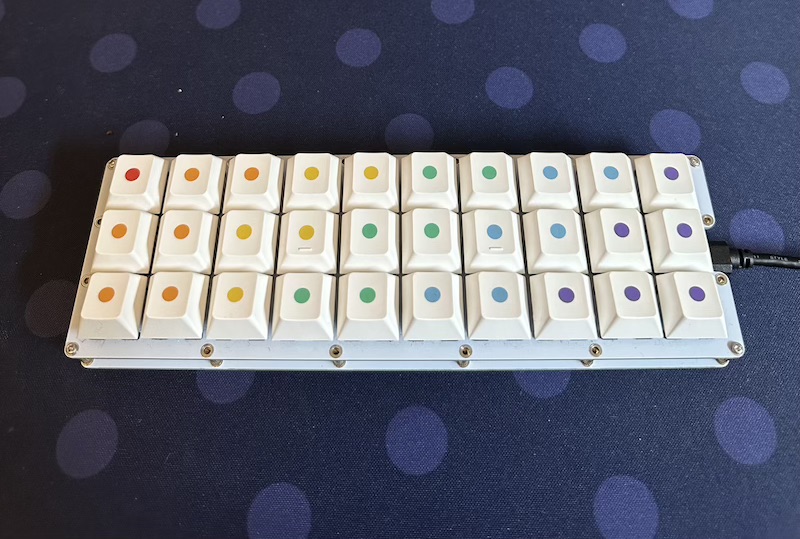This is Gherkin.


A rather … small keyboard. Just 30 keys, in pleasingly straight lines.
Even my Piantor looks kind of large next to it.


Not to mention this beast …


For Swedish speakers, I discussed this keyboard a bit in this week's Kodsnack episode. I was, and am, not really in the market for another keyboard. Especially not one requiring work to figure out another new layout. But how could I not act when a listener was looking for a new home for a largely unused keyboard, and asked very little money for it? And I managed to get used to a 40% keyboard much quicker than I had ever expected, so surely I would at least get something interesting out of 30% as well?
And yes, I could. I am very slow, and I make a lot of mistakes, but I can get regular typing done and know where things are. This after spending at most a couple of hours in total typing, and probably even more time just thinking about the layout and where things might go. If I keep at it, I can at least see myself becoming usefully fast and accurate for typing regular text like this. Programming might take a bit longer, and I am not sure I will focus on that in any case. I do not foresee this becoming a daily driver. But hey, stranger things have happened …
Adapting to the smaller number of keys is interesting. Despite my layout being - as of now - as similar as I can make it to my other keyboards, I frequently drift and misplace my fingers. I think the issue is that the various edges of the keyboard no longer represent the same keys. I get much better accuracy if I think sort of from the home keys - F and J - and outward. The edges come earlier, but all the offsets are where they have always been, if that makes sense.
The main challenge for my mind was the fact that there are ten columns of keys rather than the twelve I am used to. That leaves very few keys free after A to Z have been laid out in the usual fashion, and even they do get their positions altered a bit. You see, the middle two keys on the bottom row serve as space and backspace, so they get Z, X, C, and V to their left and B, N, and M to their right. The BNM group does trip me up regularly, but I think the general layout is worth it.
Symbols, arrow keys, and numbers have generally been packed in about the same way as my larger layouts. I probably should make some larger changes on those layers, because I really had to pack things in, and many keys got shuffled around a bit without any real plan. A few intelligently chosen new layers could make a huge difference. Current clear sufferers from layout problems are the - key and tab. I want a convenient tab not only for auto completions and the like, but also for app switching. And for app switching, I need to combine it with the command key and frequently also the shift key. I have created what is essentialy a dedicated tab layer, but I am sure there is more and better I can do here.
I will also, of course, put the layout on Github once it has landed just a bit more.
(I at least want to be writing posts like this on the Gherkin without any major issues before I consider things settled down.)